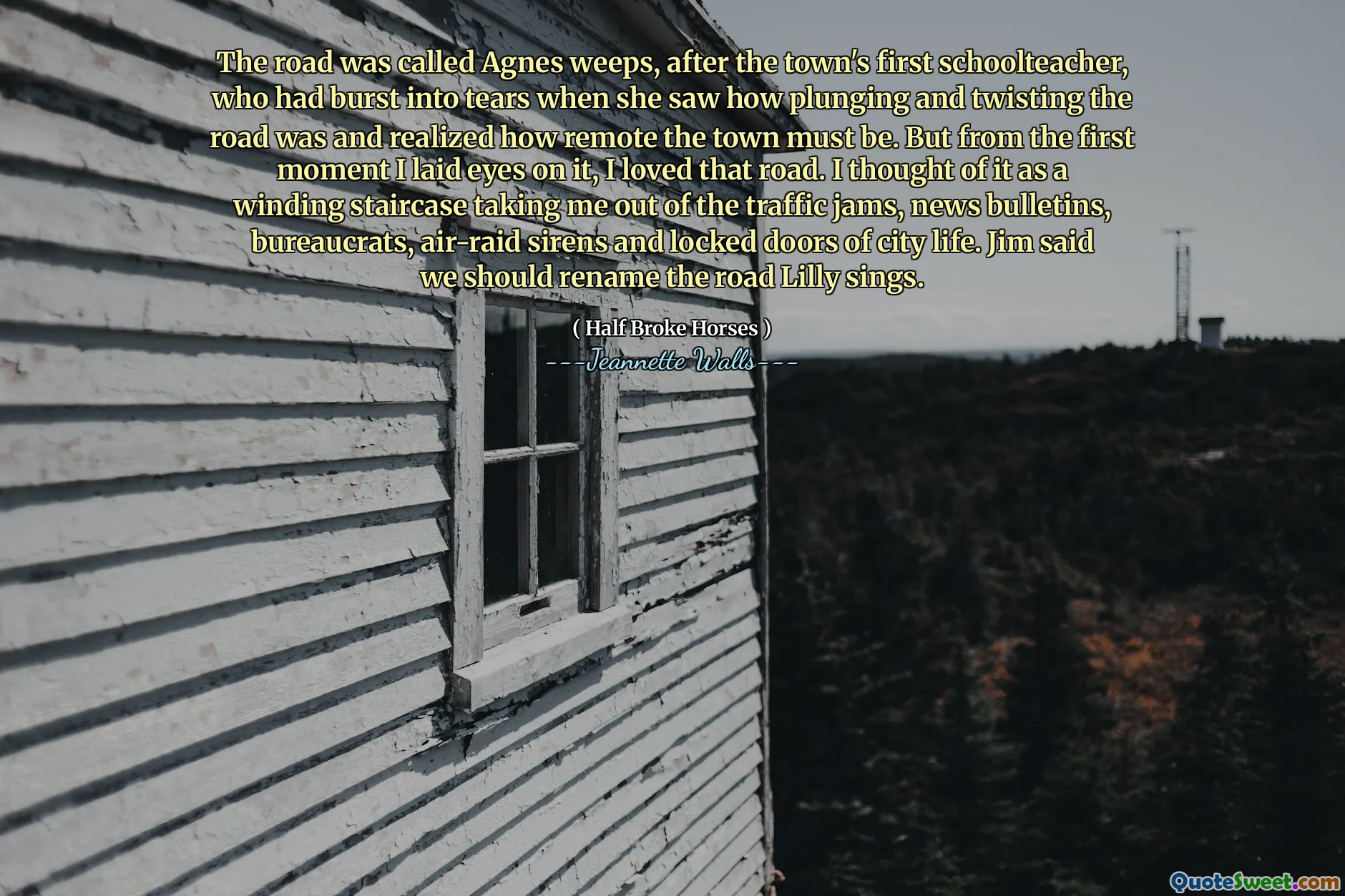
The road was called Agnes weeps, after the town's first schoolteacher, who had burst into tears when she saw how plunging and twisting the road was and realized how remote the town must be. But from the first moment I laid eyes on it, I loved that road. I thought of it as a winding staircase taking me out of the traffic jams, news bulletins, bureaucrats, air-raid sirens and locked doors of city life. Jim said we should rename the road Lilly sings.
The road named Agnes Weeps commemorates the town's first schoolteacher, who was overcome with emotion at its treacherous twists and its remote location. However, the narrator finds beauty in this challenging road, viewing it as a path that leads away from the chaos of city life, characterized by traffic, noise, and confinement. This perspective shows a deep appreciation for the freedom and adventure that the road represents.
Jim's suggestion to rename the road Lilly Sings captures the essence of the narrator's feelings. While Agnes's tears symbolize worry and hardship, Lilly's song evokes joy and hope. This contrast highlights the narrator's desire to embrace the allure of the road, framing it as a journey toward a more fulfilling and liberated life.











